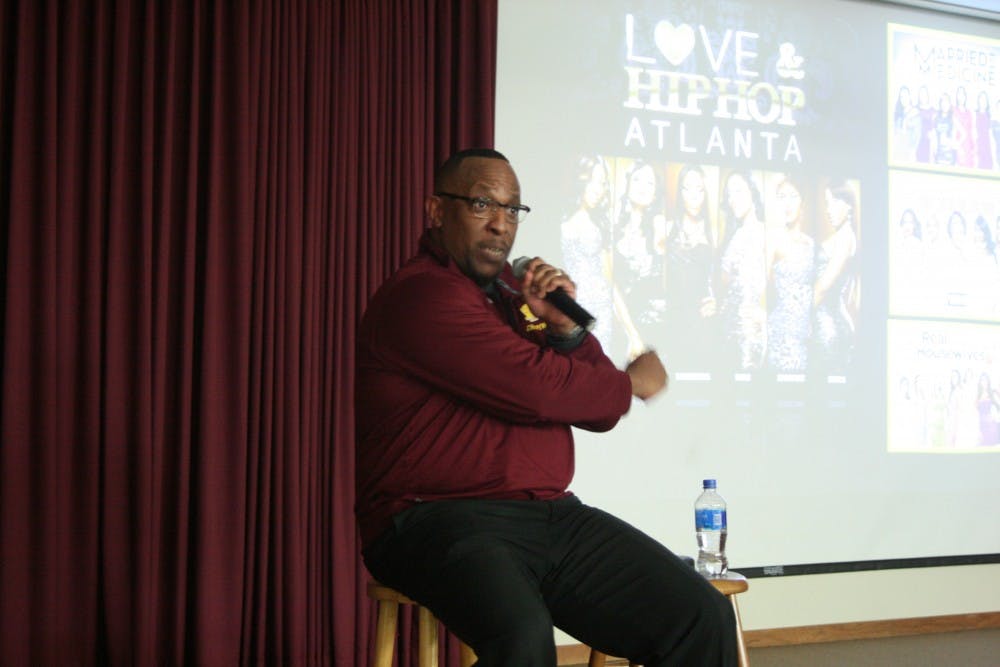Black History Month event examines African American portrayal in media

CMU NAACP member Kevin William dicusses how today's African American culture is presented during Connecting the Dots on Feb. 15 in Bovee University Center auditorium.
A conversational audience went silent to listen to the words of Kevin Williams as he presented an array of videos and photos to examine the history of colored individuals in the media.
"Connecting the Dots," sponsored by the National Association for the Advance of Colored People at Central Michigan University and Zeta Phi Beta Sorority Inc., was held Feb. 15 in the Bovee Univercity Center Auditorium.
The purpose of the event was to make people aware of colored peoples’ portrayal and limited roles in media in hopes that, in the future, we can change images that are shown, said Southfield senior Jabriel Johnson, president of the NAACP at CMU.
Kevin Williams, Student Admissions senior associate director, called his interaction with the audience a “deep dialogue”.
“The perception given to African-American citizens is usually derived directly from pop culture,” Williams said.
Williams set out to prove this first by showing the opening scene from the film “Menace 2 Society," which is set in Los Angeles. The scene depicts two young African-American boys going into a convenience store in Detroit to buy beer. They are stereotyped, mistreated and end up shooting the owners before driving away to police sirens.
This scene is closely related to the stereotypical inner city, gang stories told by colored students in classrooms at CMU, said Williams, who grew up in Detroit.
Williams discussed the evolution of African-American's portrayal in films. Because of Hollywood, drugs, sex and violence became associated with the African-American community after the ‘70s.
Williams also showed a series of music videos where the image of the African-American community is continually being tarnished. The videos shown included O.T. Genasis's "CoCo," Taylor's Girlz's "Steal Her Man,"among others.
“I am not going to be able to listen to the lyrics now and realize that it does not fit a better reality,” said Chicago sophomore Nia Malone. “I am going to let my friends know just how deep the lyrics run.”
Williams did not stop with African-American culture’s portrayal. He also presented Japanese-American’s portrayal after the bombing of Pearl Harbor and the way we treat American Indian culture on campus.
“Think about what you are saying next time you say, ‘Fire up chips’,” said Williams. “It doesn’t matter whether you shorten the name.”
Williams emphasized it is important that African-American people make it a point to state the images seen in media are not the true image. It is the uneducated, the people waving guns in videos on the internet that are making the community out to be feared.
“We need social activists who can go back to their communities and teach young men and women what is really happening in our neighborhoods,” said Williams. “It is (the students of CMU) that can change the images.”
Despite the noise, the harmful images and violence, there needs to be a voice of reason, said Williams.






